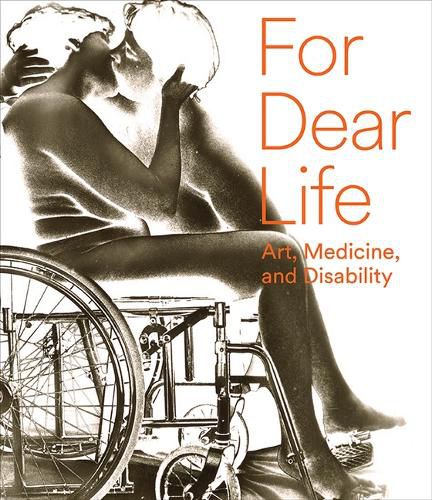Readings Newsletter
Become a Readings Member to make your shopping experience even easier.
Sign in or sign up for free!
You’re not far away from qualifying for FREE standard shipping within Australia
You’ve qualified for FREE standard shipping within Australia
The cart is loading…






A visual study of how artists have shaped responses to disability from the 1960s to the Covid era.
In recent years, the art world has seen an explosion of activity confronting issues of illness, disability, and the vulnerability of the human body. This development, which was set in motion by disability justice movements of the twenty-first century, accelerated at the start of the COVID-19 pandemic in 2020. Contemporary artists with disabilities and chronic illnesses have produced influential bodies of art and writing, seeking to highlight relations of mutual dependence and practices of care. These artists have dramatically expanded discourse about access, while reframing disability as a refusal to conform to the pace, architecture, and economic conditions of contemporary life. For Dear Life explores how this turn was preceded by the work of artists and activists beginning in the 1960s and 1970s. Informed by intersecting movements that included civil rights, antiwar, women's and gay liberation, and disability rights, artists of that era represented the body in works that merged the personal and political. This book, and the accompanying exhibition, surveys artistic responses to vulnerability, illness, impairment, and forms of unruly embodiment, tracing artistic legacies that have shaped contemporary currents in art. Gathering an intergenerational group of artists from across the United States, the project illuminates connections among art practices, social movements, and medical events of the past and present.
$9.00 standard shipping within Australia
FREE standard shipping within Australia for orders over $100.00
Express & International shipping calculated at checkout
A visual study of how artists have shaped responses to disability from the 1960s to the Covid era.
In recent years, the art world has seen an explosion of activity confronting issues of illness, disability, and the vulnerability of the human body. This development, which was set in motion by disability justice movements of the twenty-first century, accelerated at the start of the COVID-19 pandemic in 2020. Contemporary artists with disabilities and chronic illnesses have produced influential bodies of art and writing, seeking to highlight relations of mutual dependence and practices of care. These artists have dramatically expanded discourse about access, while reframing disability as a refusal to conform to the pace, architecture, and economic conditions of contemporary life. For Dear Life explores how this turn was preceded by the work of artists and activists beginning in the 1960s and 1970s. Informed by intersecting movements that included civil rights, antiwar, women's and gay liberation, and disability rights, artists of that era represented the body in works that merged the personal and political. This book, and the accompanying exhibition, surveys artistic responses to vulnerability, illness, impairment, and forms of unruly embodiment, tracing artistic legacies that have shaped contemporary currents in art. Gathering an intergenerational group of artists from across the United States, the project illuminates connections among art practices, social movements, and medical events of the past and present.